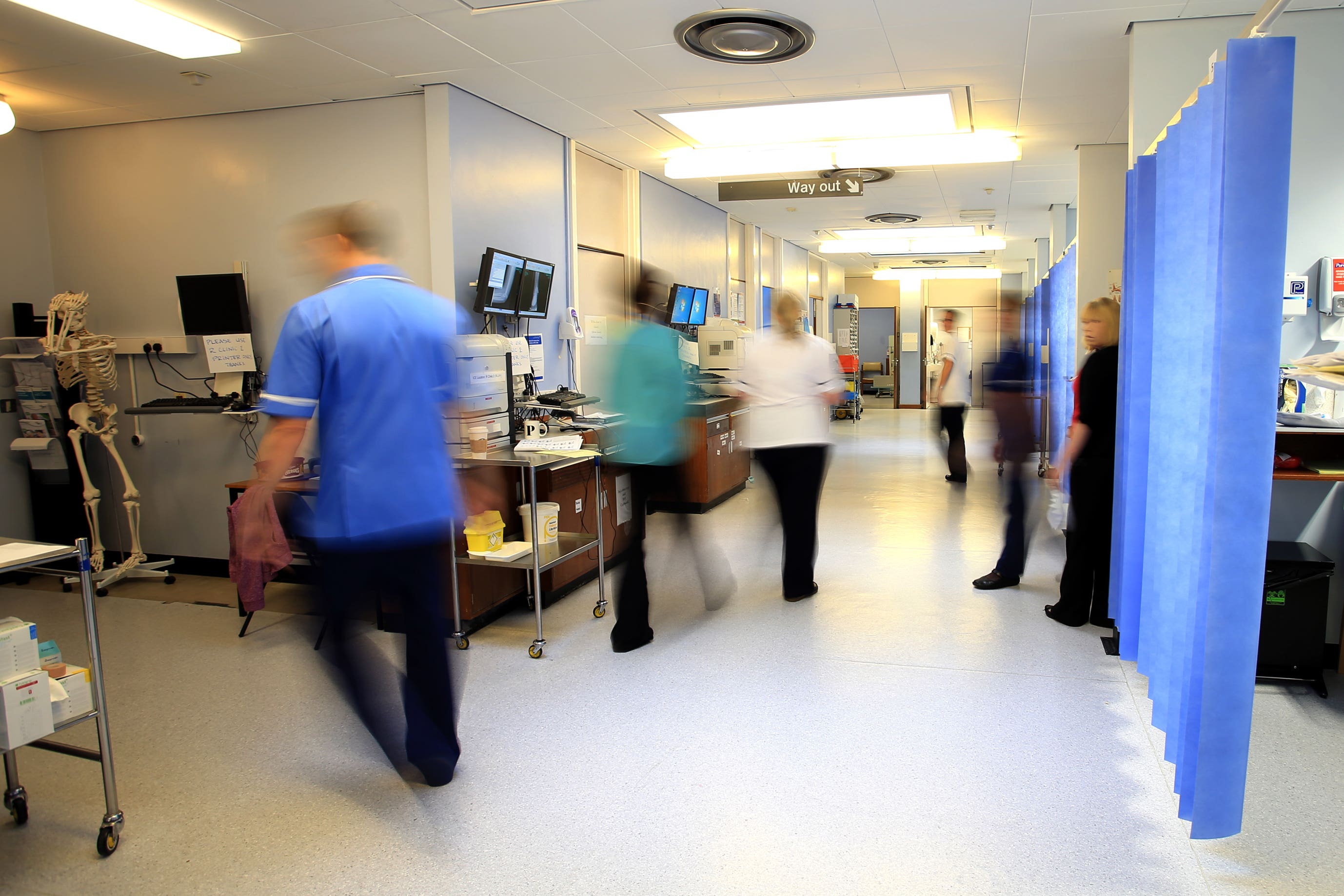Norovirus cases fall though NHS faces ‘sustained pressure’
There continue to be high levels of delayed discharges for medically fit patients.

Your support helps us to tell the story
From reproductive rights to climate change to Big Tech, The Independent is on the ground when the story is developing. Whether it's investigating the financials of Elon Musk's pro-Trump PAC or producing our latest documentary, 'The A Word', which shines a light on the American women fighting for reproductive rights, we know how important it is to parse out the facts from the messaging.
At such a critical moment in US history, we need reporters on the ground. Your donation allows us to keep sending journalists to speak to both sides of the story.
The Independent is trusted by Americans across the entire political spectrum. And unlike many other quality news outlets, we choose not to lock Americans out of our reporting and analysis with paywalls. We believe quality journalism should be available to everyone, paid for by those who can afford it.
Your support makes all the difference.Norovirus cases in hospitals in England have fallen from their recent peak, but remain well above levels at this time last year, figures show.
An average of 689 adult hospital beds per day were occupied last week by patients with diarrhoea and vomiting or norovirus-like symptoms, down 18% from 840 in the previous week.
The fall is likely to help ease demand for beds, though health chiefs have warned that the NHS continues to face “sustained pressure” from other factors such as delays in discharging people who are medically fit and treating patients who have tested positive for Covid-19.
The latest figure of 689 norovirus cases is more than twice the number at the equivalent point in 2022, when the average stood at 293, according to NHS data.
The average reached 840 earlier this month, which was the highest number since reporting began for the current virus season in November.
Norovirus is the most common infectious cause of vomiting and diarrhoea.
It spreads easily through contact with someone who has the virus or with contaminated surfaces.
While most people make a full recovery within two or three days, the virus can lead to dehydration, especially among the very young, elderly or those with weakened immune systems.
Figures also show the number of people in hospital in England with Covid-19 stood at 8,387 on March 22, broadly unchanged on 8,434 a week earlier but a rise of 12% on the start of the month and up 39% since the start of February.
Covid-19 continues to have an impact on patients and on our hospitals
Patient numbers peaked at 9,535 during the wave of infections at Christmas 2022.
Chris Hopson, chief strategy officer for NHS England, said Covid-19 “continues to have an impact on patients and on our hospitals”, as patients who are primarily being treated for other illnesses and injuries can take longer to recover if they also have coronavirus.
“Others may not be able to have elective surgery when they are Covid-positive and, because measures to stop the virus spreading mean additional beds need to be closed, this adds to pressures on bed capacity,” he said.
There is “sustained pressure” on NHS services, and “while the number of people in hospital with norovirus has gone down from the previous week, the numbers remain high for this time of year”.
An average of 13,340 hospital beds per day last week were filled by people ready to be discharged – around a tenth higher than the 12,028 waiting at this point last year.
Overall, 41% of medically fit patients in England were discharged last week, down from 43% the previous week.
Meanwhile, ambulance handover delays outside hospitals have improved.
A total of 23% of patients waited at least half an hour last week to be handed to A&E teams, down week on week from 28%.
Some 9% of patients waited more than an hour, down from 12%.
The figure for waits of at least 30 minutes climbed as high as 44% at the start of the year.